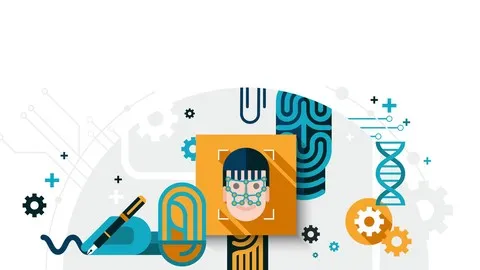
Microsoft Azure Cognitive Services: Computer Vision API 
Microsoft Azure Cognitive Services offers a powerful Computer Vision API, allowing users to extract information from images and gain insights into their content. This state-of-the-art service provides a comprehensive set of tools for analyzing images. ▼
ADVERTISEMENT
Course Feature
![]() Cost:
Cost:
Free Trial
![]() Provider:
Provider:
Pluralsight
![]() Certificate:
Certificate:
Paid Certification
![]() Language:
Language:
English
![]() Start Date:
Start Date:
On-Demand
Course Overview
❗The content presented here is sourced directly from Pluralsight platform. For comprehensive course details, including enrollment information, simply click on the 'Go to class' link on our website.
Updated in [March 06th, 2023]
[Course Overview] Microsoft Azure Cognitive Services: Computer Vision API is a course that teaches learners how to use the state-of-the-art computer vision technology provided by Microsoft Azure to analyze images, read text, and identify objects. This course will provide learners with a fundamental understanding of the Computer Vision API and how to use it to solve real-world problems.
[Why to Learn] By taking this course, learners will gain the skills to use the Computer Vision API to analyze images, read text, and identify objects. This will enable them to save time and effort by automating tedious tasks such as manually typing in data from a paper source onto a digital form or spending hours categorizing and tagging images one by one. Additionally, learners will gain a better understanding of the Microsoft Cognitive Services Suite and how to use it to its full potential.
[Development Paths] After completing this course, learners can further their knowledge of the Microsoft Cognitive Services Suite by taking courses such as Microsoft Azure Cognitive Services: Natural Language Processing, Microsoft Azure Cognitive Services: Speech Recognition, and Microsoft Azure Cognitive Services: Language Understanding. Additionally, learners can explore other cloud computing technologies such as Amazon Web Services and Google Cloud Platform.
[Related Learning Suggestions] Learners can also explore related topics such as machine learning, artificial intelligence, and natural language processing. Additionally, they can take courses on image recognition, computer vision, and deep learning to gain a better understanding of the technology behind the Computer Vision API.
[Applications]
Upon completion of Microsoft Azure Cognitive Services: Computer Vision API, learners can apply their knowledge to a variety of real-world scenarios. For example, they can use the API to automate the process of extracting text from images, such as scanned documents, and use the extracted text to populate digital forms. They can also use the API to quickly and accurately identify objects in images, such as landmarks, celebrities, and nature tags. Additionally, learners can use the API to generate thumbnails of images, classify images, and detect faces in images.
[Career Paths]
1. Computer Vision Engineer: Computer vision engineers are responsible for developing and implementing computer vision algorithms and systems. They use machine learning and deep learning techniques to create systems that can recognize objects, detect patterns, and interpret images. They also work on developing new algorithms and technologies to improve the accuracy and speed of computer vision systems. As the demand for computer vision technology increases, the need for computer vision engineers is expected to grow.
2. Machine Learning Engineer: Machine learning engineers are responsible for developing and deploying machine learning models. They use algorithms and techniques such as supervised and unsupervised learning, deep learning, and reinforcement learning to create models that can accurately predict outcomes. They also work on optimizing existing models and developing new ones. As the demand for machine learning technology increases, the need for machine learning engineers is expected to grow.
3. Data Scientist: Data scientists are responsible for analyzing data and extracting insights from it. They use techniques such as data mining, machine learning, and statistical analysis to uncover patterns and trends in data. They also work on developing predictive models and visualizations to help organizations make better decisions. As the demand for data-driven insights increases, the need for data scientists is expected to grow.
4. Artificial Intelligence Engineer: Artificial intelligence engineers are responsible for developing and deploying AI systems. They use techniques such as natural language processing, computer vision, and machine learning to create systems that can understand and interact with humans. They also work on optimizing existing AI systems and developing new ones. As the demand for AI technology increases, the need for AI engineers is expected to grow.
[Education Paths]
1. Bachelor of Science in Computer Science: This degree path focuses on the fundamentals of computer science, including programming, software engineering, and computer architecture. It also covers topics such as artificial intelligence, machine learning, and data science. This degree is ideal for those looking to develop the skills necessary to work with the Computer Vision API. Developing trends in this field include the use of AI and machine learning to automate processes and improve accuracy.
2. Master of Science in Artificial Intelligence: This degree path focuses on the development of AI systems and their applications. It covers topics such as natural language processing, computer vision, and machine learning. This degree is ideal for those looking to develop the skills necessary to work with the Computer Vision API. Developing trends in this field include the use of AI and machine learning to automate processes and improve accuracy.
3. Bachelor of Science in Data Science: This degree path focuses on the fundamentals of data science, including data analysis, data mining, and machine learning. It also covers topics such as artificial intelligence, natural language processing, and computer vision. This degree is ideal for those looking to develop the skills necessary to work with the Computer Vision API. Developing trends in this field include the use of AI and machine learning to automate processes and improve accuracy.
4. Master of Science in Computer Science and Engineering: This degree path focuses on the fundamentals of computer science and engineering, including programming, software engineering, and computer architecture. It also covers topics such as artificial intelligence, machine learning, and data science. This degree is ideal for those looking to develop the skills necessary to work with the Computer Vision API. Developing trends in this field include the use of AI and machine learning to automate processes and improve accuracy.
Course Provider

Provider Pluralsight's Stats at AZClass
Pluralsight ranked 16th on the Best Medium Workplaces List.
Pluralsight ranked 20th on the Forbes Cloud 100 list of the top 100 private cloud companies in the world.
Pluralsight Ranked on the Best Workplaces for Women List for the second consecutive year.
AZ Class hope that this free trial Pluralsight course can help your Computer Vision skills no matter in career or in further education. Even if you are only slightly interested, you can take Microsoft Azure Cognitive Services: Computer Vision API course with confidence!
Discussion and Reviews
0.0 (Based on 0 reviews)
Explore Similar Online Courses

Create Your First Chatbot with Rasa and Python

How to Make an E-commerce Business with WordPress - 2020 NEW

Python for Informatics: Exploring Information

Social Network Analysis

Introduction to Systematic Review and Meta-Analysis

The Analytics Edge

DCO042 - Python For Informatics

Causal Diagrams: Draw Your Assumptions Before Your Conclusions

Whole genome sequencing of bacterial genomes - tools and applications

Introduction to Computer Vision

Learn Computer Vision with OpenCV Library using Python


Start your review of Microsoft Azure Cognitive Services: Computer Vision API